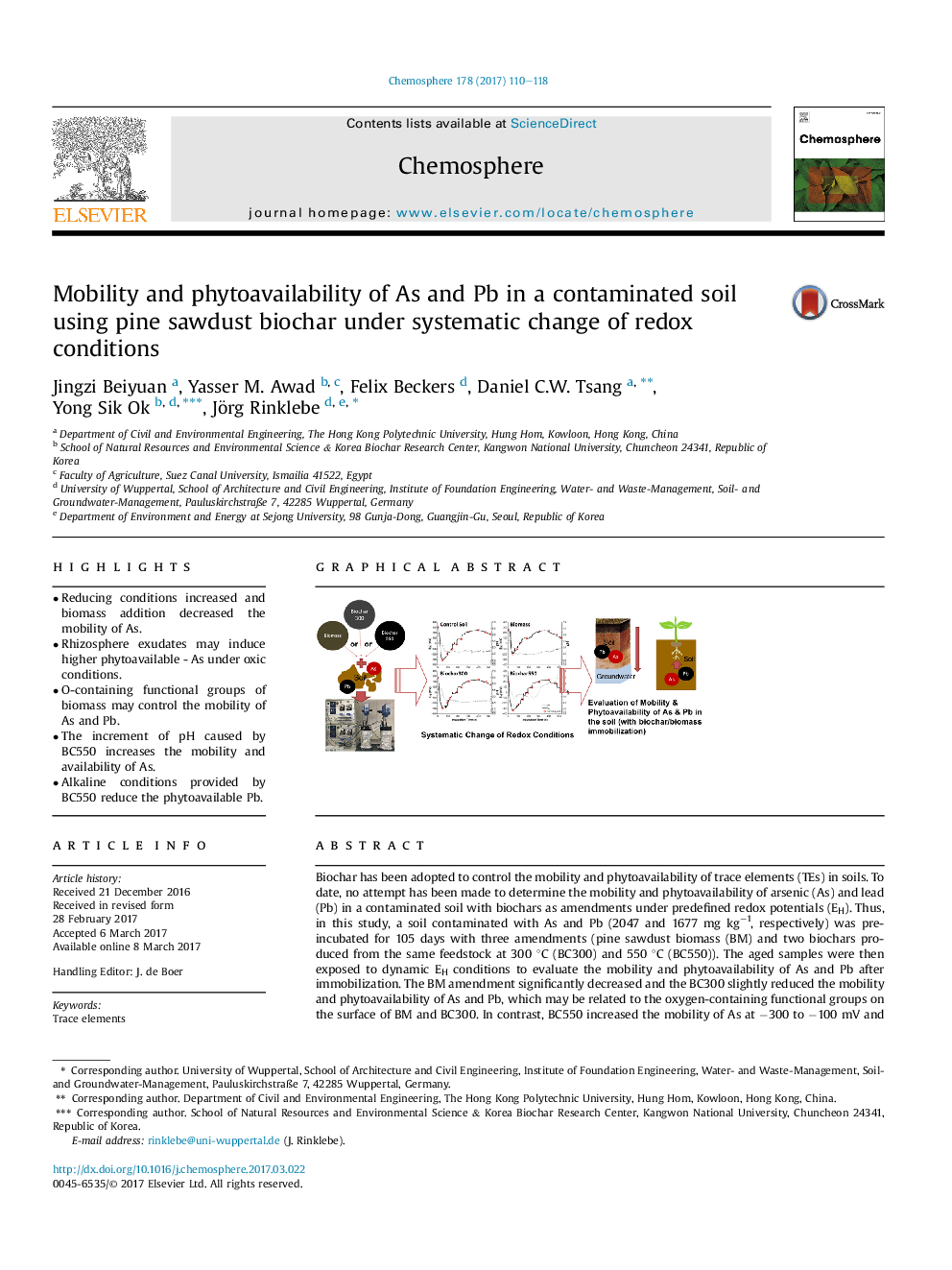| کد مقاله | کد نشریه | سال انتشار | مقاله انگلیسی | نسخه تمام متن |
|---|---|---|---|---|
| 5747275 | 1618793 | 2017 | 9 صفحه PDF | دانلود رایگان |
- Reducing conditions increased and biomass addition decreased the mobility of As.
- Rhizosphere exudates may induce higher phytoavailable - As under oxic conditions.
- O-containing functional groups of biomass may control the mobility of As and Pb.
- The increment of pH caused by BC550 increases the mobility and availability of As.
- Alkaline conditions provided by BC550 reduce the phytoavailable Pb.
Biochar has been adopted to control the mobility and phytoavailability of trace elements (TEs) in soils. To date, no attempt has been made to determine the mobility and phytoavailability of arsenic (As) and lead (Pb) in a contaminated soil with biochars as amendments under predefined redox potentials (EH). Thus, in this study, a soil contaminated with As and Pb (2047 and 1677 mg kgâ1, respectively) was pre-incubated for 105 days with three amendments (pine sawdust biomass (BM) and two biochars produced from the same feedstock at 300 °C (BC300) and 550 °C (BC550)). The aged samples were then exposed to dynamic EH conditions to evaluate the mobility and phytoavailability of As and Pb after immobilization. The BM amendment significantly decreased and the BC300 slightly reduced the mobility and phytoavailability of As and Pb, which may be related to the oxygen-containing functional groups on the surface of BM and BC300. In contrast, BC550 increased the mobility of As at â300 to â100 mV and 100 mV, enhanced the phytoavailability of As under oxidizing condition (>100 mV), but reduced the phytoavailability of Pb, which might be caused by the properties of amendments and redox chemistry of the TEs. The effectiveness of BM and biochars for the stabilization of As and Pb varied under dynamic EH conditions, which indicates that detailed investigations should be conducted before the applications of biochar as soil amendment under variable environmental conditions, especially for contaminated paddy soils.
278
Journal: Chemosphere - Volume 178, July 2017, Pages 110-118
